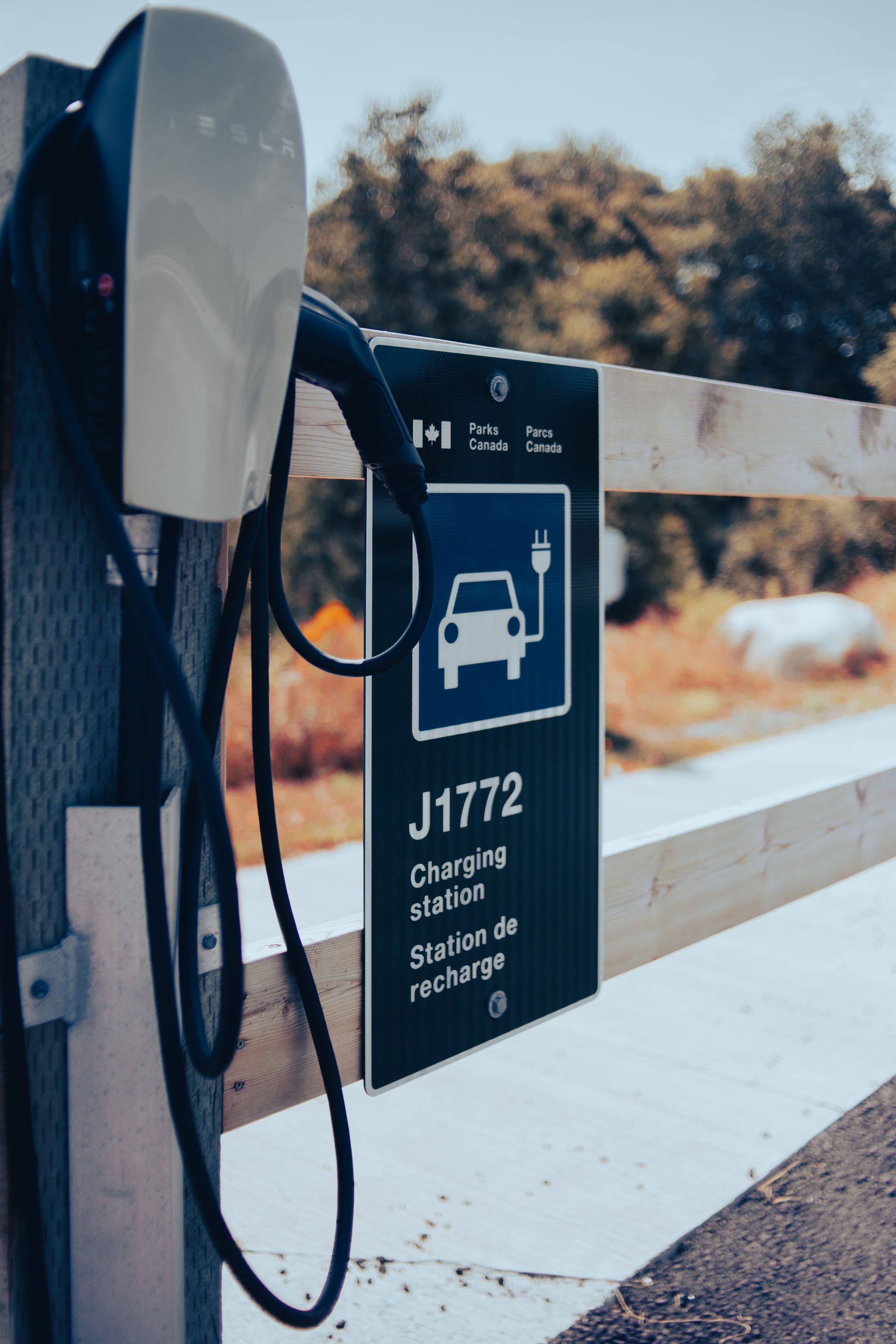How To Earn £1M From Rapid EV Chargers
How Does An Average Business Convert Its Car Park Into An EV Charging Powerhouse?

In the current market, the main issue with electric vehicles is access to charging points.
The UK government set a target of 300,000 chargers by 2030. However, the UK government chose the wrong strategy, focusing on what at ZPN we call slow charging, or chargers using less than 50 kWh in power. In simple terms, that's about 80% of the average EV's battery delivered in an hour. In the market, there are chargers called 'fast chargers', that are not, in fact, fast; they just happen to be faster than the charger they give you in the boot of the car when you buy it. It's a bit like saying walking to London is faster than crawling. Neither are fast; just comparatively, you get there faster if you walk, and likewise, you get there faster if you run. However, it's not really 'fast'.
This is part of the problem with electric vehicles.
To make this point, let's quickly compare filling your petrol or diesel car with fuel compared to doing it with a 'fast' charger. You pull up at a petrol station, take your seat belt off, get out of the car, open the fuel flap, take the nozzle off the pump, stick it in the hole in the side of your car, and squeeze the handle until it's full. The most inconvenient part of this is queuing up to pay in the shop, and then returning to your car, reversing the process before driving away. This whole process takes maybe 5 or even 10 minutes if you're unlucky; you have to queue up, but the whole process is over and done with very quickly. The so-called 'fast charger' on the other hand, involves driving around looking for a charger, most likely by the curbside or in a car park. So you follow the same process, undo your seat belt, get out, open the flap, see if the payment app is working, all being well, plug in the charge head into the side of your car, and wait maybe 14 hours for your car to charge while you sit in a cold dark car park. There may be a trade-off in quality, but it's usually made up for in time. It's not only slower; it's significantly worse in almost every regard.
So what is the solution? The solution to this problem is charging that's actually fast. These charges are known as Rapid or Ultra-Rapid, or Level 3 for our customers in the USA. This not only solves the fast charging problem but also can help you drive significant revenue from your existing car park assets.
Most non-motorway-based rapid EV charges have been placed in locations where charge point operators (CPOs) such as InstaVolt, Ionity, or Tesla could rent spaces from the landowner. The typical rent from these spaces ranges from £2000 to £10,000 a year per space, and this is exactly why you should never rent your spaces to a charge point operator. Yes, while they take all the risk, they also take all the benefit.
That said, there are ways are of installing exactly the same type of kit with no upfront cost, which we will address later.
Let's give you some facts about the rapid charging market. Right now, there are not enough rapid chargers, certainly not enough in the right places. By right places, I mean locations that are accessible night and day just where you need them. Coverage of rapid chargers is improving, particularly along trunk roads, but there are gaps everywhere else. What we do see from this market is typical use of a rapid charger right now with around 1 million EV vehicles on the road is 15%. What does 15% mean? That means about 3 1/2 hours of use per charger per day. The average margin right now per kilowatt is about 20 pence. So how is this calculated? It's simple. You buy energy from the grid, which currently averages about 30 pence per kWh.
With a rapid charger, you sell the energy at about 70 pence per kWh; from that, VAT is deducted so you end up with around 20 pence per kWh as your net margin. That margin is then multiplied by the number of kilowatt-hours of electricity your EV charger have pumped for each hour of use. This is not linear, because EV batteries charge slower below 20% and above 80%, and not all vehicles charge at the same rate.
What we do know from statistics is the current average charge in the UK is about 26 kilowatts, and the average charge rate that most cars can do is around 60 kilowatt-hours. Both these last statistics are increasing rapidly, with most new electric vehicles charging at a rate of 150 kilowatt-hours during the 20 to 80 charge period, and the average battery size has increased in new vehicles from around 50 kWh to around 80 kWh, with some vehicles with batteries as big as 120 kWh. This means the revenue from a typical charger has increased by around 30% in the last two years and is only going to improve more.
Before going any further, there is an elephant in the room. You will have heard how the grid is incapable of delivering the charge we need, where we need it, in any timely fashion. This is mostly true if you just buy a normal rapid or Level Three electric vehicle charger.
Let me explain why. Normal chargers require the grid to be available 24/7 so that when you turn them, electricity flows, and your car gets charged.
However, there is a glaring issue with this strategy; you can only fit as many chargers as you have grid supply. Too many chargers, and the grid will not be able to handle the energy demand. This is where ZPN Energy’s technology comes in. We simplified it by adding batteries between the grid supply and the charger, but we went a step further and enabled those batteries to charge in a modular way so you can charge and discharge at the same time, which means two things. Firstly, you can put Rapid chargers where ordinarily you might have been limited to slow charging or you can add up to 50% more ZPN Chargers than any other charger. Then, we went a step further; we enabled all of our technology to integrate with on-site renewables, which means all of our chargers can work off-grid. Most importantly, we not only drive you significant revenue but also potentially cut your energy bills by as much as 50%.
So how do you make this work for you, and how do you get to £1,000,000 of revenue every year from your car parks? Let me give you 3 scenarios:
Scenario One:
Option 1
You have a business with a car park with no significant roof space. There are 2 obvious solutions here. The first is you maximise the number of chargers for your existing grid supply, which might mean that you have one or two rapid chargers. Each of these could drive you revenue of up to £150,000 a year for an investment of just over £100,000.
As above you have the same business but your energy supply isn't quite big enough, we apply for a small increase; it doesn't require reinforcement and repeat this may mean that you could have three or four chargers. The cost of this is slightly more; however, you gain the ability to drive even more revenue. Don't forget that most businesses are closed about 16 hours a day, and most EV charging is actually done when most businesses are closed. So neither of these scenarios has to impact your working day, but your charger becomes available for your supplier and your employee base 9-5.
Option 2
Do you have a business with a car park with significant roof space? As above, the same rules apply; however, what's different is we cover your roof in solar and the batteries that are integrated with the system harvest energy whenever it's available. The main advantage of this is it reduces the input cost of your energy by up to 50%, increasing your margin and improving your return on investment.
Scenario Two:
You have a business, something like a car dealership or car rental business. Both option one and option two above apply just the same; however, the difference here is scale and the number of chargers you can put on-site. Let's take a typical car dealership in the UK; their average square footage is around 100,000 square foot. This means every hour of every day light day a solar system on their roof will produce over a MW of energy. When you integrate this into your EV charging system, you generate a kWh of energy for about 7 pence and sell it for 70 pence, and this is how we really build up to £1,000,000 worth of revenue. What better way to sell an electric vehicle than offer your own home grown energy? In simple terms, if this means that you sell an extra 10 vehicles a month because you have brilliant charging, the cost of the system is negligible. The incredible number is what that charging is worth because the system is earning you money while you sleep.
Scenario Three:
You're a larger business, maybe a supermarket like a Lidl or a Tesco, maybe a manufacturing business. Typically these buildings have roof space of between 50,000 and 1,000,000 square feet; this means that your roof is capable of generating between 0.75 and 6 megawatts of energy every hour during daylight hours. This energy is then stored and then deployed either in the building that is attached to or to your customer-facing chargers. The effect is to not only reduce the cost of your energy by over 50% but also give you the maximum margin on any kilowatt of energy pumped for the charger. We have a little trick up our sleeve in each of these examples. Firstly, we predict whether it's going to be sunny, and we can also predict when the cheapest time of day to charge your batteries is, meaning the energy that you serve either to your building or to your charger is always the cheapest available kW. This guarantees your margin and reduces your fixed costs.
We have yet to model a system that has a return on investment longer than six years, and 80% of these projects are less than three.
The last question here is funding; how do you fund a significant development of this type for your business? In Scenario One, Option One, funding options are limited, and this is one part of the pressure that we're putting on the UK government to improve access to funding for these types of developments because they're mostly SMEs who traditionally struggle to access quality funding. In each of the other options from Scenario 1, Option 2, to Scenario 3, we have access to power purchase agreement funders (PPA) who can install a system of this type with no upfront cost, funded over the next 25 years where you keep 100% of the revenue simply for buying the energy that's produced from your roof. We have discussed solar quite a lot in this blog; however, wind and other forms of renewable generation can be included with certain funders.
So you're now asking, 'How do I get to the £1,000,000?'
Well, the numbers work something like this, to get to £1,000,000 worth of revenue from fitting EV chargers; you have to install just five rapid chargers rated at around 150 kilowatt-hours. To hit the £1,000,000 mark, those charges need to average, based on current figures utilisation of about 30%. In simple terms, this means just under 8 hours a day per charger; however, you may actually hit that number sooner depending on how the car market develops. Currently, the car market is made up of early model electric vehicles with certain brands quite dominant, such as Nissan Leaf and the Renault Zoe; these have small batteries and slower charging rates even at DC speeds.
If you compare the carpool with vehicles released over the last 18 months and what is forecast, battery sizes have doubled, and charge rates nearly tripled compared to the early adopted vehicles. The market is also less dominated by premium vehicles such as Tesla and Porsche; almost every brand is bringing out a budget electric vehicle, an example would be the DACIA Spring, and mainstream manufacturers like MG producing affordable cars like the MG4.
This means the market's going to grow and fast. So as stated at the beginning of this blog, average utilisation of rapid chargers is about 15%, and even with more competition, this will continue to grow because the UK EV car fleet is just over a million vehicles out of a total pool of 42,000,000 vehicles. Roughly speaking, we need 5 rapid EV chargers for every UK petrol pump, so you should quickly see how easily either through utilisation or faster charging behaviours that £1,000,000 target of revenue is more than achievable.
So if you're reading this having rented out some parking spaces to a charge point operator, you may need to rethink your strategy.








